Ever wonder what happened to Larkana’s HIV babies?
LARKANA, Sindh: More than three and a half years ago, a small town doctor stumbled on Pakistan’s biggest HIV outbreak. On February 22, 2019, a six-year-old girl was brought to Dr Imran Arbani’s clinic in Ratodero, with a population of around half a million, in Sindh’s Larkana district. The girl had fever and was losing weight precipitously. Despite visits to multiple doctors and a variety of treatments, the child’s condition didn’t improve. Tests for gastro diseases, including malaria and typhoid, came back negative. Out of desperation, Dr Arbani suggested that the child be tested for HIV.
To everyone’s surprise, the test came back positive. Dr Arbani then ordered the parents to be tested. The results for both were negative. The only explanation, in Dr Arbani’s opinion, was that a doctor could be involved in the transmission of the virus which spreads through blood. It is vertically transmitted through anal and vaginal sex, and sharing needles, surgical equipment or barbershop utensils that are reused without sterilization after exposure to HIV+ blood as well.
Dr Arbani told Aaj Digital that since he stumbled on the epidemic three years ago, not a single day has gone by when a new case has not been diagnosed

After this, Dr Arbani asked all patients who visited his clinic for the next 20 days to get tested. Twenty of those cases came back positive. Of these, 15 samples were tested at the People’s Primary Healthcare Initiative (PPHI) at Ratodero and five by the Aga Khan University Hospital in Karachi.
The number of cases sent alarm bells ringing, with the health secretary at that time, Saeed Ahmed Awan, ordering medical camps in Larkana district - previously know to the world for the world heritage site of Mohenjo Daro and the hometown of the Bhutto dynasty.
All the people coming to these medical camps, a majority of them dirt poor, were tested. Those who tested positive were made to see a doctor and were provided treatment.

On the instructions of the health department, the then senior superintendent of police (SSP) in Larkana, Masood Bangash, ordered a crackdown on quacks and illegal medical practitioners in the district.
Meanwhile, a paeditrician, Dr Muzaffar Ghanghro, was arrested with claims swirling around that he deliberately transmitted the virus to his patients. He was later released Police said that he was provided protective custody due to fears that he might be targeted because of the perception at that time. His clinic remains closed to this day.

Current situation
More than three and a half years after Dr Arbani’s chance discovery, around 47,000 patients in Larkana have been screened for the virus since the establishment of the HIV Support Center in Ratodero in August 2019.
Dr Shahida Memon, who runs the centre, says 2,178 of those screened have tested positive so far. “Among them, the number of HIV+ children is 1,435 with 743 adults.”
She said that the centre has conducted roughly one million tests across the 16 centres established by the government in Sindh.
So far, Ratodero has reported 65 deaths from HIV. Locals who spoke to Aaj Digital say that the number could be twice as high. Of the reported cases of fatalities, 60 were children and five were adults.

Dr Arbani told Aaj Digital that since he stumbled on the epidemic three years ago, not a single day has gone by when a new case has not been diagnosed. “The government needs to focus on the causes of the outbreak and how to expand screening services.”
Meanwhile, the quacks and illegal medical practitioners are back in business. When the police was asked about their reappearance, they refused to comment.
Dr Arbani fears that only a major intervention can break the “unstoppable chain of cases” in the district. “Comprehensive screening is important because Ratodero has become a high-risk community. Only with more screening will we know how many people are actually positive.”
It warrants mention that the Bhutto family’s Pakistan Peoples Party has been in power in Sindh for the last fifteen years. The party has had some success in introducing health services in urban centres in the province but failed to improve infrastructure or facilities - including health-related ones - in small towns and rural centres. This includes their home district of Larkana.
Miracle in the midst of madness
In those three and a half years years, an astonishing 80 babies were born whose parents were diagnosed with HIV but the babies had no sign of the virus at birth.
Dr Memon says that was possible because center was opened at Ratodero, which has three clinics: one for children, one for adults and the third for prevention of parent-to-child transmission of HIV (PPTCT).
“Thanks to this, 80 pregnant women who were diagnosed with HIV during pregnancy delivered normal babies without the virus,” Dr Memon said, “If we can stop vertical transmission, we can stop stop it at other transmission points as well.”

Alongwith screening patients, the centre is also running an awareness and advocacy project to inform people about the virus, its causes and symptoms. Under the same project, more than 250 children registered at the center have been enrolled in schools, Dr Memon said. “The number of cases registered has decreased in three years, but there is still work to be done.”
According to Dr. Arbani, if an HIV+ woman undergoes proper treatment during her pregnancy, the chances of transmitting the virus to the child goes down significantly.
The majority of the residents in Larkana district suffer from poverty, including those with infected family members. Due to this, the Sindh government announced a a monthly allowance of Rs3,000 per infected person from this year. Following a delay in the next two installments, each patient was provided Rs12,000 at the next one, said Dr Memon. “The next installments have been delayed and are awaiting the district commissioner’s approval.”
Aaj News spoke to a man whose two children died of HIV while two others are undergoing treatment. He blamed medical malpractice for the spread of the virus while saying that they had stopped receiving the allowance announced by the government.

The Infection Control Society, at a press conference to mark World Aids Day in Karachi earlier this week, said that the number of HIV/AIDS positive people in Pakistan was 210,000 in 2021 while citing UNAIDS data. It said the prevalence rate of the disease in Pakistan was 0.2 percent, with 9,600 reported deaths due to the virus last year.
According to medical journal Lancet’s 2019 report, the HIV epidemic in Pakistan is concentrated in key populations: people who inject drugs (38·4% of whom have HIV); male sex workers (5·6%); female sex workers (2·2%); transgender sex workers (7·5%); men who have sex with men (5·4%); and transgender people (7·1%).
In 2018, the UNAIDS country progress report for Pakistan highlighted key problems to Pakistan’s AIDS response programme. “For example, since devolution of the Ministry of Health to the provinces in 2010, the HIV response has faltered because of weak coordination among federated units, lack of commitment from health officials, flaws in reporting of HIV cases, variation in HIV interventions, lack of effective community engagement, and medical malpractice by unregistered and unqualified people (referred to locally as quacks) who claim to offer medical care,” said the Lancet report.
For the latest news, follow us on Twitter @Aaj_Urdu. We are also on Facebook, Instagram and YouTube.

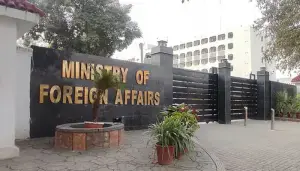
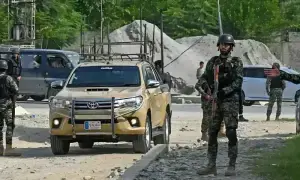





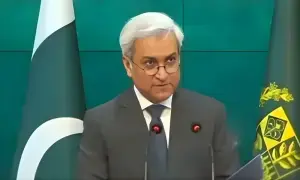


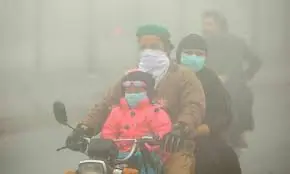
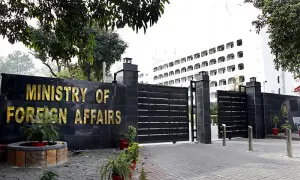

Comments are closed on this story.